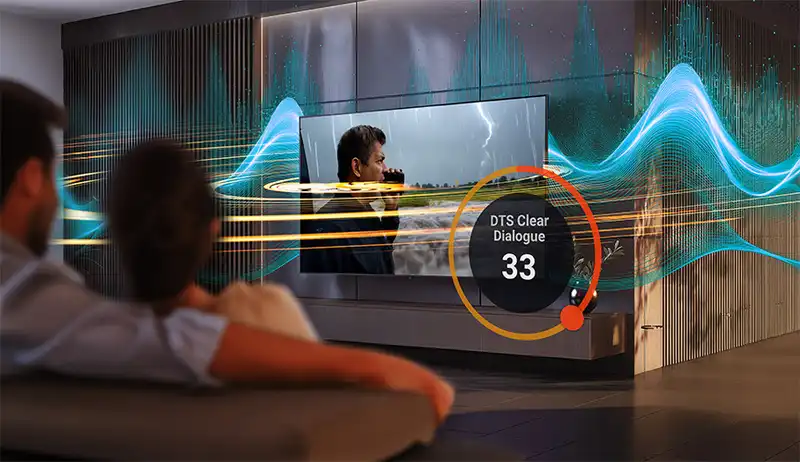For many people, understanding what their favorite characters are saying in their favorite TV shows and movies has become a struggle. They say, “I can't listen without subtitles!” has become a common refrain of people discussing their movie and TV viewing habits. As with any good joke, there is a kernel of truth underlying it. However, the issue of difficult audio, especially dialogue, is very complex.
In a recent survey conducted by Xperi, which asked 1,200 adults about their television viewing habits, 84% of respondents reported having difficulty understanding dialogue. Seventy-seven percent of those surveyed indicated that they use subtitles or captions to reduce their difficulty in understanding dialogue, and an additional 30% indicated that they turn subtitles on most of the time. Subtitles can be an appropriate workaround, but they can also spoil future surprises during the program or become inaccurate during live broadcasts. No matter how rooted a moviegoer you are, this will only increase your frustration.
Aside from linguistic challenges such as dialects, accents, and hearing impairment, one important aspect is that sound quality has declined significantly as TVs have become thinner, with industrial designs that fit better with modern interiors and prioritize picture quality. Compromises had to be made somewhere in order to achieve thin design and high visual fidelity. But that is not the only reason.
Audio quality, in general, remains an integral part of the home entertainment experience. However, background music, sound effects, and environmental noise, in addition to linguistic issues and physical device limitations, can mask dialog and adversely affect dialog intelligibility. This is especially true when many channels are mixed together, as is often the case with immersive or surround soundtracks played on stereo televisions. The effects of such audio masking can easily lead to viewer frustration and disengagement, especially for those with hearing impairments. dts Clear Dialogue, a new technology from DTS, a subsidiary of Xperi Inc, is an AI-based user-controllable solution that harnesses the power of audio post-processing.
DTS Clear Dialogue was developed to identify and separate spoken dialogue from all other audio elements, allowing viewers to freely adjust the balance and boost the dialogue to suit their personal needs. The engineers work with all types of content and content sources, regardless of language, and DTS has decades of expertise in developing speech processing technologies that, when perfectly combined with today's advances in AI and machine learning, can address one of the most chronic problems in TV audio Powered by AI technology and trained on vast sets of audio data, DTS Clear Dialogue provides a user-first solution that is easy to use and adaptable to a variety of TV platforms and operating systems.
Clear, intelligible audio is no longer at odds with beautiful television design. Much of today's television hardware supports complex data processing. Implementing DTS Clear Dialogue at the TV chip level is the surest way to ensure the most enjoyable experience for the viewer. Combining the clear dialog UI with dedicated buttons on the remote control can also make it easier for TV OEMs to implement and provide users with an even more user-friendly, clear, and straightforward solution.
TV manufacturers now have a technology that can make a difference by putting the means to control audio in the hands of the user with DTS Clear Dialogue.










Comments